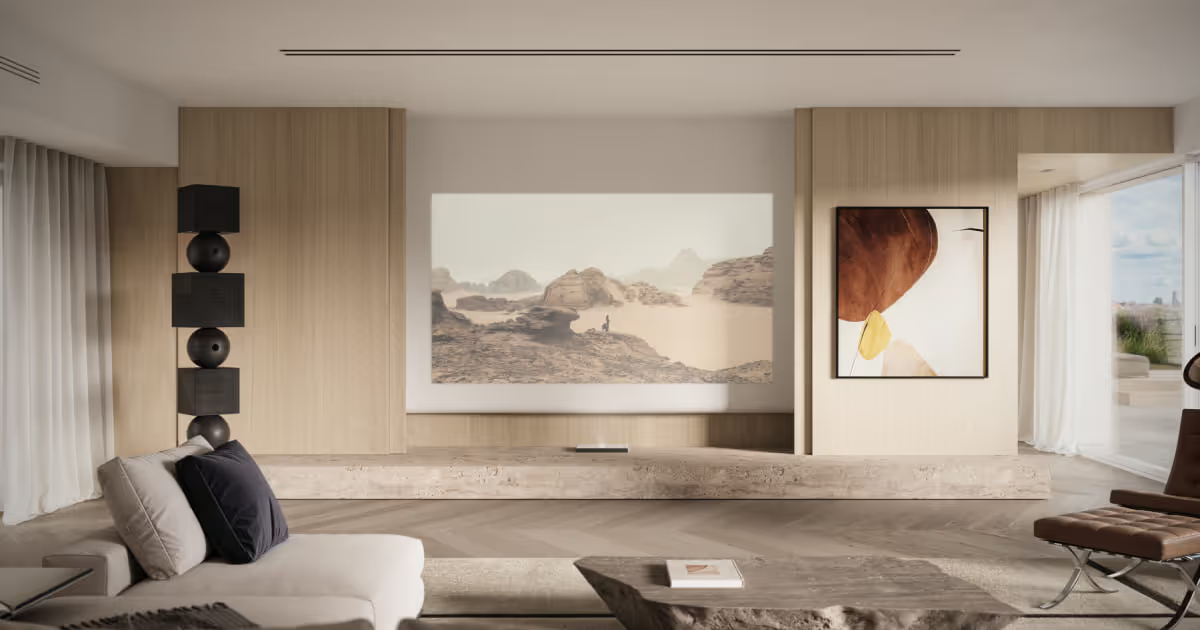The question isn't whether AI will replace creative professionals. It's how we can harness its power to unlock possibilities we never imagined. As the founder of a 3D rendering studio who's spent the past two years integrating AI into every phase of our creative workflow, I've witnessed firsthand how AI in architectural visualization transforms not just our output, but our entire creative approach. After implementing AI across our pipeline and reducing project timelines by 10-15%, one thing has become crystal clear: this technology isn't here to replace creativity. It's here to liberate it.
AI in Architectural Visualization: Beyond the Hype
When I spoke at the IDS conference and BuildEX panel last year, the most common concern from fellow creatives was fear. Fear of obsolescence, fear of losing the human touch, fear of technology they didn't understand.
Today, after implementing AI across our entire pipeline and reducing project timelines by 10-15%, I can definitively say that AI isn't here to replace your creativity.
It's here to liberate it.
Our journey began in early 2023, when AI tools first became publicly accessible. Like many studio founders, I approached this technology with equal parts curiosity and caution. Now, AI touches every aspect of our work, from initial concept generation to final post-production refinement.
The transformation has been profound, but not in the way most people expect.
Our Operational Systems Transformed Completely Through AI Implementation
Before diving into the creative applications, let's address the unglamorous truth. The most immediate AI impact happens behind the scenes.
Our ClickUp workspace, enhanced with AI capabilities, has fundamentally changed how we manage projects.
Consider this scenario from last week. A client messaged asking about texture files for their luxury residential project. Before I could even notify our project coordinator, our AI assistant had already provided a comprehensive summary including file locations, upload status, and revision history.
What once required 15 minutes of back-and-forth now happens instantly.
These AI-powered systems handle automated note-taking during client calls, capturing nuanced design preferences. They manage intelligent file organization that anticipates team needs. They provide proactive reminders for quality checks and deadline management. And they deliver real-time project status updates accessible to all stakeholders.
The result?
Our AI tools effectively handle tasks that previously required dedicated project coordination staff, allowing our human team members to focus on what they do best; creating breathtaking visualizations.
Every Great Visualization Begins with AI-Enhanced Concept Creation
Every rendering project begins with an idea, but translating that vision into something tangible has always been our industry's first major hurdle.
We've transformed this challenge through strategic AI implementation in our concept generation phase.
Our refined process now includes initial AI concept generation using tools like Flux AI and Midjourney to explore multiple design directions rapidly. We conduct client collaboration sessions where we present AI-generated concepts for early feedback.
Then we refine direction based on client input, ensuring alignment before any 3D modeling begins.
This approach has dramatically reduced revision cycles. By confirming the visual direction early, whether it's the interplay of natural light across limestone facades or the warmth of evening illumination through floor-to-ceiling windows, we eliminate costly misunderstandings later in the process.
The key insight? AI concepts aren't final products. They're conversation starters that bridge the gap between abstract ideas and concrete visualization.
Implementation Becomes More Precise When AI Guides the Process
During the implementation phase, AI serves as our creative compass, guiding us toward photorealistic excellence. Here's where the technology truly enhances our craft.
For photorealism refinement, we've developed a unique workflow where we generate quick AI variations of our 3D renders to identify areas for improvement. The AI might reveal that our sky gradients need adjustment, that window reflections lack proper environmental context, or that our shadow behaviour doesn't match the intended time of day.
Post-Production Excellence Emerges from Carefully Selected AI Tools
Our post-production process draws on a range of AI tools we’ve tested across real projects. We use Magnific AI for image upscaling that preserves architectural details. For animated video production, we’ve explored Kling AI - a tool that’s quickly become part of our creative toolkit.
The recent Corona Chaos 13 update deserves a mention too. With AI now integrated directly into our primary rendering software, we’ve seen a noticeable improvement in workflow efficiency. It’s not perfect yet, but having these capabilities built-in rather than relying solely on third-party solutions is a glimpse into the future of architectural visualization.
The Philosophy of Finding Balance in the AI Era
After two years of intensive AI adoption, I’ve learned that success lies not in the technology itself, but in how we approach it. The most common mistakes I see in our industry fall into two extremes.
First, there’s fear-based avoidance. Studios refuse to engage with AI, seeing it as a threat rather than a tool. This often comes from misunderstanding what AI actually does. It doesn’t replace creativity; it should amplify it.
Second, there’s over-reliance. Too often I see work that’s almost entirely AI-generated. It’s fast, yes, but it lacks the subtle human touches - the storytelling, the emotional nuance - that elevate good visualization into something extraordinary. That’s why I remind my team to stay present in their craft. AI isn’t infallible; it makes mistakes, it makes the images generic sometimes. Our role as creatives is to guide it, question it, and add the depth only human judgment can bring.
Strategic Implementation Requires a Thoughtful, Phased Approach
For studios considering AI integration, I recommend this focused strategy:
Start by identifying your pain points. Don't adopt AI because it's trendy. Begin by pinpointing specific workflow challenges. Is it lengthy revision cycles? Time-consuming asset research? Inconsistent quality control? Let the problem guide your solution.
Then start small but think big. Choose one AI tool that addresses your most pressing issue. Master it completely before expanding your toolkit. We began with AI note-taking for client meetings, a simple change that immediately improved project clarity.
Always maintain human oversight. AI excels at pattern recognition and rapid iteration, but it lacks the nuanced understanding of spatial storytelling that defines exceptional architectural visualization. Always filter AI suggestions through professional judgment.
Finally, stay current but stay critical. Follow AI developments through LinkedIn thought leaders and industry forums, but evaluate every new tool against your actual needs. Not every innovation deserves a place in your workflow.
Success Metrics Tell Only Part of Our Transformation Story
While our 10-15% reduction in project timelines represents tangible success, the true transformation runs deeper. Our designers spend less time on repetitive tasks and more time exploring creative possibilities.
Client satisfaction has increased not just because we deliver faster, but because we can explore more options within the same timeframe.
The quality improvements are equally significant. AI helps us achieve consistency across large projects while maintaining the bespoke attention to detail our clients expect. Every shadow, every reflection, every material texture benefits from AI-assisted refinement without losing the artistic vision that drives our work.
The Future We're Building
The rendering industry stands at an inflection point. Studios that embrace AI thoughtfully will discover new creative horizons, producing work that would have been impossible or prohibitively expensive just years ago. Those that resist may find themselves struggling to compete not on quality, but on the breadth of exploration they can offer clients within reasonable budgets.
My message to fellow creatives remains consistent whether I'm speaking at conferences or mentoring emerging talent. AI is here not to replace your creativity, but to free you from constraints that have always limited our industry. It handles the routine so you can focus on the extraordinary. It accelerates the mundane so you can invest in the innovative.
A Tool, Not a Replacement
As we continue pushing the boundaries of architectural visualization at Eight Station, one principle guides every decision. AI remains a tool in service of human creativity, not its replacement. It helps us work faster, catch more details, and explore more options. But the vision, the artistic judgment, and the emotional resonance of our work remain fundamentally human.
The future of creative work isn't about choosing between human creativity and artificial intelligence. It's about combining both to achieve results neither could accomplish alone. In our studio, AI doesn't diminish the role of our designers. It amplifies their capabilities, allowing them to create visual narratives that truly capture the essence of unbuilt spaces.
For those standing at the threshold of AI adoption, my advice is simple. Approach with curiosity, implement with purpose, and never forget that technology serves creativity, not the other way around. The tools will continue evolving, but the fundamental goal remains unchanged. We're creating visualizations that inspire, inform, and transform architectural visions into tangible realities.



